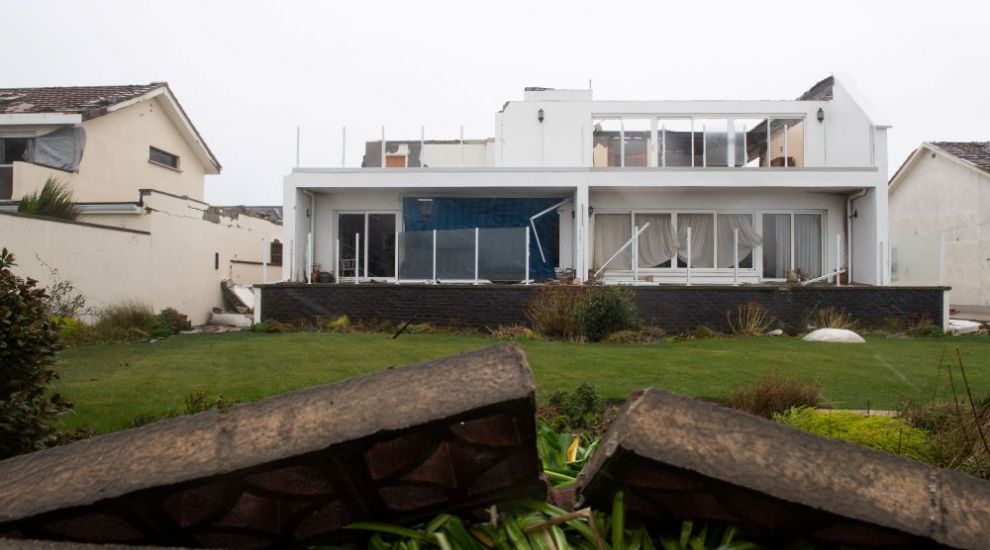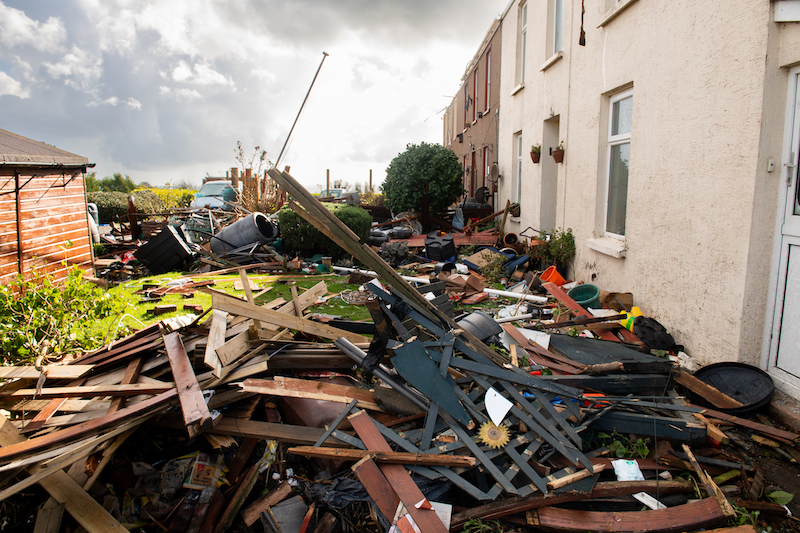


Jersey was battered last week – not just by Storm Ciarán, but by a tornado that lifted roofs off houses and cars off streets.
St Clement and Fliquet were hit particularly hard, and 180 families had to be relocated to the Radisson Hotel.
But why was Jersey hit by a tornado and how does it compare to others?
Express took a look at what happened according to the experts at the Tornado and Storm Research Organisation (Torro)...
There are several scales used to measure tornado strength.
The one used by research organisation Torro is the T-scale, which they say is “a natural extension to the Beaufort scale”. The T-scale goes from T0 (light tornado) to T10 (super tornado).
By visiting the sites affected, researchers can measure the impact of the tornado and compare it to the damage you would expect to see from each classification.
Pictured: Drone footage showing the damage caused by the tornado. (Slingshot Films)
Using this methodology, Torro gave the tornado that hit Jersey a preliminary rating of T6, or “moderately-devastating tornado”. This is roughly equivalent to F3 on the Fujita scale, which is popular in North America.
Tornadoes of this classification typically reach speeds of 161-186 mph, over a track length of 10-21km (6-13 miles) and with a width of 100-215m.
The tornado that hit Jersey arrived on-land at St Clement, and created an 8km-long track before exiting the island at Fliquet.
At its peak, it was between 400m and 500m wide.
Tornadoes are surprisingly common in the British Isles – with around 36 reported each year, most frequently in central, southern and eastern England and South Wales. The majority of these are weak, and the Jersey tornado is estimated to be the strongest to have hit the British Isles in almost 70 years.
According to Torro, the tornado that hit Jersey last week was was "easily" the most powerful ever recorded in the Channel Islands.

Pictured: Some of the damage caused by the tornado to properties in Fliquet. (Rob Currie)
It was the strongest tornado in the British Isles since the 1954 tornado that hit Gunnersbury, in West London, on Wednesday 8 December 1954 – which tore the roof off a Tube station. The Gunnersbury tornado is estimated to have hit T7 on the scale.
Another tornado hit Birmingham in 2005, which was rated T5/6, according to the group. The damage, witnesses said, resembled “what it would look like if a bomb had gone off”.
According to Torro, the tornado was the result of a rare super-cell thunderstorm. To form, tornadoes need a combination of a very unstable atmosphere and strong winds or shear within the storm.
Within these thunderstorms are powerful updraughts, where the air is much warmer and rises rapidly. When this happens in the middle of strong or rapidly-changing winds, the updraught can begin to rotate. Stretching upwards makes the column of air spin faster. If the column of air touches the ground, a tornado is born.
This is unheard of. Such large hail in November in this part of Europe, along with possibly a tornado. It occurred with a low-topped supercell storm in association with storm Ciarán. CAPE low, very strong low-level wind shear. https://t.co/226L0AcQcX pic.twitter.com/bWQjdnkILv
— Pieter Groenemeijer ???????????????? (@pgroenemeijer) November 2, 2023
The huge hail, which one expert said was "unheard of", was caused by drops of water being pulled into the updraught and into freezing clouds. Water droplets then formed into ice, fell back down, and absorbed ascending water droplets.
The updraught was so powerful that they were kept in the air for longer, and more droplets had to clump together to become heavy enough to fall to the ground – hence their odd shape.
If you have been affected by Storm Ciarán or the tornado and need help, the Government has published the following list of support services:
Customer and Local Services (including Housing Advice Service), 01534 444444 or email customerservice@gov.je
Children and Family Hub, 01534 519000 or email childrenandfamilieshub@gov.je
For a mental health crisis, call 01534 445290
Your Parish Halls for community help and support
In an emergency, call 999
Report fallen trees to Love Jersey lovejersey.gov.je
A Jersey GP has also shared her advice on what you can do to take care of your wellbeing.
Pictured top: The aftermath of Storm Ciarán in St Clement. (Jon Guegan)
Comments
Comments on this story express the views of the commentator only, not Bailiwick Publishing. We are unable to guarantee the accuracy of any of those comments.